Background
In 1999, Poland joined NATO to enhance its strategic defense against external threats.[i] From 2002-2009, Poland engaged in talks with the United States and European countries to build a US missile defense complex in Poland. The missile defense complex in Poland, known as the European Interceptor Site, would have been a part of the Ground-Based Midcourse Defense system that intercepted long-range missiles from Iran.
In October 2009, the Obama administration replaced the European Intercept Site plan with the European Phased Adaptive Approach (EPAA). On September 15, 2011, a joint statement between the U.S. and Poland was released that fulfilled the earlier agreements of the Ballistic Missile Defense (BMD) Agreement of 2008 and its Amending Protocol of 2010. The agreements included the deployment of land-based SM-3 systems in Poland to go into immediate effect.
On April 22, 2011, Polish President Komorowski signed legislation ratifying the Agreement to integrate land-based SM-3 Block IIA interceptors in Poland by 2018.[ii] In March 2018, it was announced that the Aegis Ashore site would be delayed two years and is now expected in 2020. As of 2023, the Aegis Ashore site in Redzikowo has been installed and is expected to be operational by the end of the year.
Since the onset of the Russian invasion of Ukraine in 2022, Poland has undertaken massive development of missile defense architecture, becoming a leader in Europe for missile defense. This includes purchase agreements with the United States and Germany for the acquisition of missile defense systems to counter the Russian threat in the region.
Poland’s Air Defense Capabilities
| System | Role | Number Deployed | Platform | |
| SA-6 Gainful | Low to medium-level air defense | Unknown | Ground-Based, Road-Mobile | 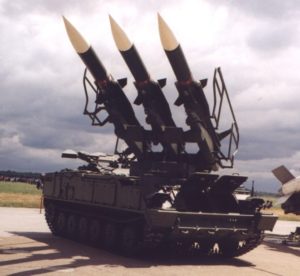 |
| SA-8 Gecko | Low altitude, short-range air defense | Unknown | Ground-Based, Road-Mobile | 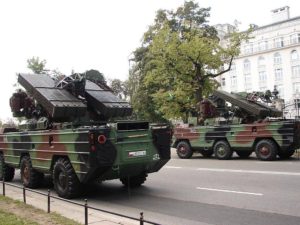 |
| SA-5 Gammon (S-200) | Medium to high-altitude air defense | One battery | Ground-Based | 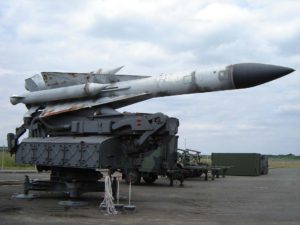 |
| SA-3 Goa | Short-Range Air Defense | 12 Systems | Ground-Based; Road-Mobile |  |
| SA-4 Ganef | Medium-Range Air Defense | Unknown | Ground-Based; Road-Mobile | 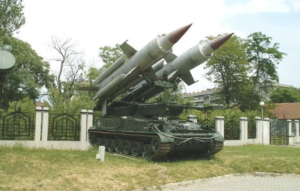 |
| SPZR Poprad | Short-Range Air Defense | 2 Units – 77 | Ground-Based; Road-Mobile | 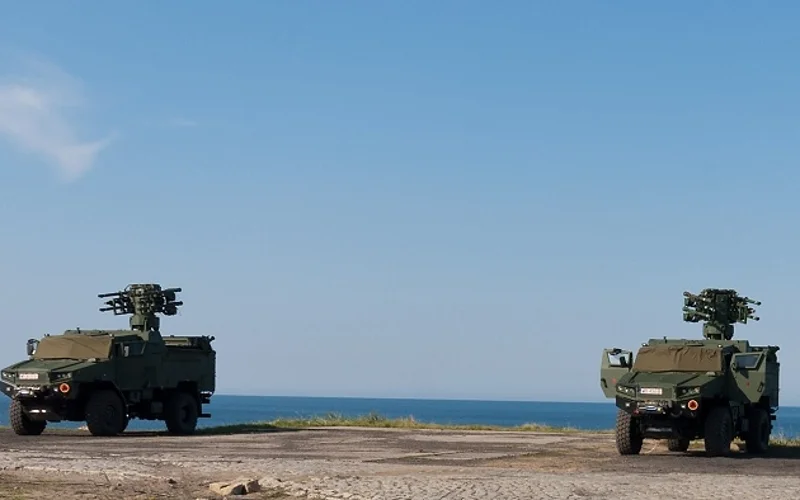 |
| Patriot PAC-3 Launchers | Long-Range Air Defense | 48 Systems – 13 Batteries – 644 Patriot PAC-3 MSE Missiles | Mobile | 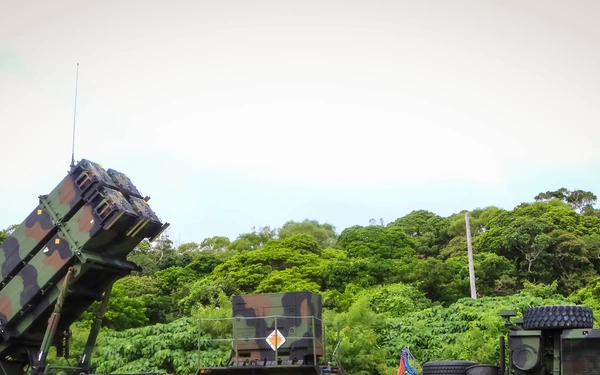 |
| ZSU-23-4MP Biala | Short-Range Air Defense | 70 Systems | Ground-Based; Road-Mobile |  |
| ZU-23-2 | Short-Range Air Defense | 44 Systems and some naval variants | Ground-Based; Road-Mobile | 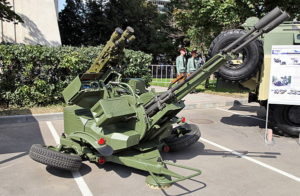 |
| Hibneryt | Short-Range Air Defense | 70 Systems | Ground-Based; Road-Mobile | 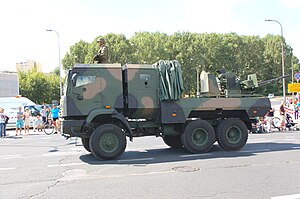 |
| Lower Tier Air and Missile Defense Sensors (LTAMDS) | Long-Range Air Defense | 12 Systems | Mobile | 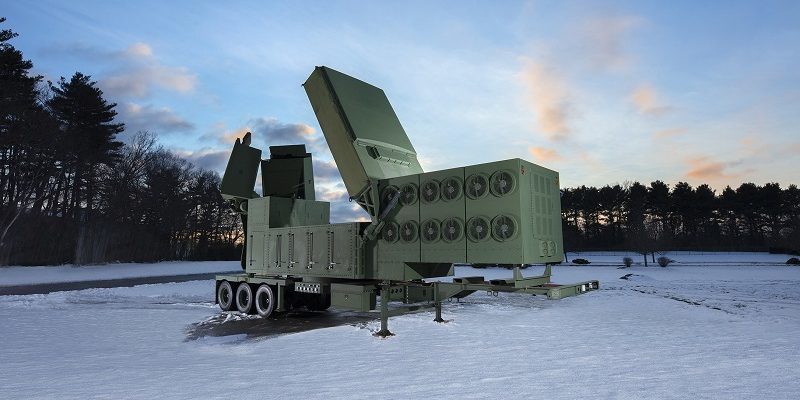 |
Current Developments
In the wake of Russia’s annexation of the Crimea region of Ukraine, in April 2015 Poland announced it would acquire Raytheon’s Patriot missile defense system for an estimated $5.4 billion contract to create a national missile shield in addition to the US missile shield planned for 2018 to protect Europe.[iii] Poland’s efforts to modernize its domestic defense and upgrade its Integrated Air and Missile Defense will contribute to the NATO air and missile defense mission.
The Raytheon contract includes the latest Patriot Advanced Capability-3 missile which is capable of intercepting cruise missiles and short to intermediate range ballistic missiles. The Polish Defense Ministry announced intent to purchase eight batteries by 2025, with two delivered within three years of a final deal.[iv]
In response to Russia’s plan to rearm the missile brigade in the Kaliningrad province, Poland announced its desire to deploy additional batteries of Patriot anti-air defense systems in the area, in August 2017.[v] The agreement was signed in November 2017 and the first Patriot battery might delivered as early as 2019.[vi] A second deal was signed in March 2018, with batteries expected as early as 2022.
In addition to the U.S. BMD system, an Aegis Ashore, will be built near Redzikowo as part of Phase III of EPAA. Planned for completion by 2020, the Aegis Ashore site will be equipped with SPY-1 radar and 24 SM-3 missiles. The phased plan includes SM-3 Block IIA interceptors, which will give the system “an enhanced capability to address intermediate-range ballistic missiles and a limited capability to address intercontinental missiles” to support the defense of Northern Europe.[vii] The EPAA Phase III site, combined with the rest of the EPAA assets, will be able to protect nearly all of NATO Europe against ballistic missile threats from the Middle East.
In January of 2015, the United States and Israel opened talks between Israeli defense manufacturer Rafael and Poland regarding the David’s Sling Weapons System. This system would allow Poland to shoot down short-range ballistic missiles in their terminal phase. Poland may now begin working on developing the system in conjunction with these two allied nations. In June 2017, Poland purchased interceptor missiles from Israel’s David’s Sling missile defense system to be integrated with the Patriot defense system.[viii]
On July 26, 2022, 6 of the U.S. Air Force’s F-22 Raptors landed at Royal Air Force Lakenheath, England, before they were sent to Poland. The Air Force said that the F-22s “will provide a near seamless shield from the Baltic to Black Seas, ensuring NATO Allies are better able to safeguard and protect Alliance territory, populations and forces from air and missile threat.”
In September 2023, Poland and the United States announced an agreement for the sale of 12 LTAMDS and 48 Patriot launchers from the United States. The acquisition of these systems is part of phase 2 of the WISŁA program. Once LTAMDS becomes operational, Poland will become the first country after the United States to operate LTAMDS in cooperation with Patriot launchers. Additionally, the United States agreed to the potential sale of an IAMD Battle Command System to Poland, which includes 93 IAMD Battle Command System Engagement Operation Centers and 175 IBCS Integrated Fire Control Network relays. Also in September 2023, Poland and the UK announced a joint effort to develop an upgraded version of MBDA’s Common Anti-Air Modular Missile (CAMM). On September 21, 2023, Poland announced that they would no longer be sending arms to Ukraine.
In December 2023, Poland and the US announced the transfer of ownership of the Aegis Ashore site in Redzikowo, Poland from the Missile Defense Agency to the U.S. Navy. The site is expected to become operational in March 2024, following years of delays.
In February 2024, the United States approved the sale of $1.2 billion sale of radar recon aerostat systems to Poland. These overhead dirigible systems, Airspace and Surface Radar Reconnaissance (ASRR) provide Poland with top tier regional surveillance capability.
Recent News
References
[i] http://www.nytimes.com/1999/03/13/world/expanding-alliance-the-overview-poland-hungary-and-the-czechs-join-nato.html
[ii] https://www.opednews.com/Diary/The-Missile-Defense-Review-by-arn-specter-110506-930.html?f=The-Missile-Defense-Review-by-arn-specter-110506-930.html
[iii] https://www.bostonglobe.com/business/2015/04/21/poland-picks-raytheon-for-billion-deal-polish-newspaper-says/iwTHaVuDvMZKCkbm0HmJZP/story.html
[iv] Ibid.
[v] http://uawire.org/news/polish-foreign-minister-poland-to-buy-patriot-missile-defense-system-from-us-because-of-iskanders-in-kaliningrad
[vi] https://sputniknews.com/military/201711021058757418-poland-us-patriot-battery-ministry/
[vii] https://www.defense.gov/News/Article/Article/759662/work-joins-groundbreaking-for-ballistic-missile-defense-site-in-poland/
[viii] https://www.breakingisraelnews.com/91199/poland-purchase-israeli-missiles-new-us-defense-deal/#/
